«Did you know that until 1992, Drawings and Prints were two separate departments within the Museum? Behind the scenes, there are many physical reminders of this earlier era, including separate storerooms, separate study rooms, and staff offices spread over two floors. However, both in the public galleries as well as conceptually, these two areas of the collection are now wholly integrated, allowing for a richer understanding of how works on paper were made and used.»
The present installation in gallery 690 (on view through December 8) explores a few special cases in which both a print and the drawing upon which it was based have wound up in our collection, allowing for fascinating side-by-side comparisons. Our newest instance of such good fortune is this recent acquisition by the sixteenth-century, Italian-born artist Luca Penni (1500/1504–1557).

Luca Penni (Italian, 1500/1504–1557). Christ in Limbo, ca. 1547–48. Black chalk, pen and brown ink, brush and brown wash, heightened with white gouache, on paper prepared with pale brown wash. The Metropolitan Museum of Art, New York, Purchase, Brooke Russell Astor Bequest and Harry G. Sperling Fund, 2014 (2014.264)
As he was designing this fantastic scene of Christ in Limbo freeing the souls who had been imprisoned and allowing them to enter heaven, Penni clearly studied very closely a print he owned by Albrecht Dürer of the same subject. Penni's grouping at left of the figures of Saint John the Baptist, Eve, and a woman seen in profile just behind them borrows directly from Dürer's composition.
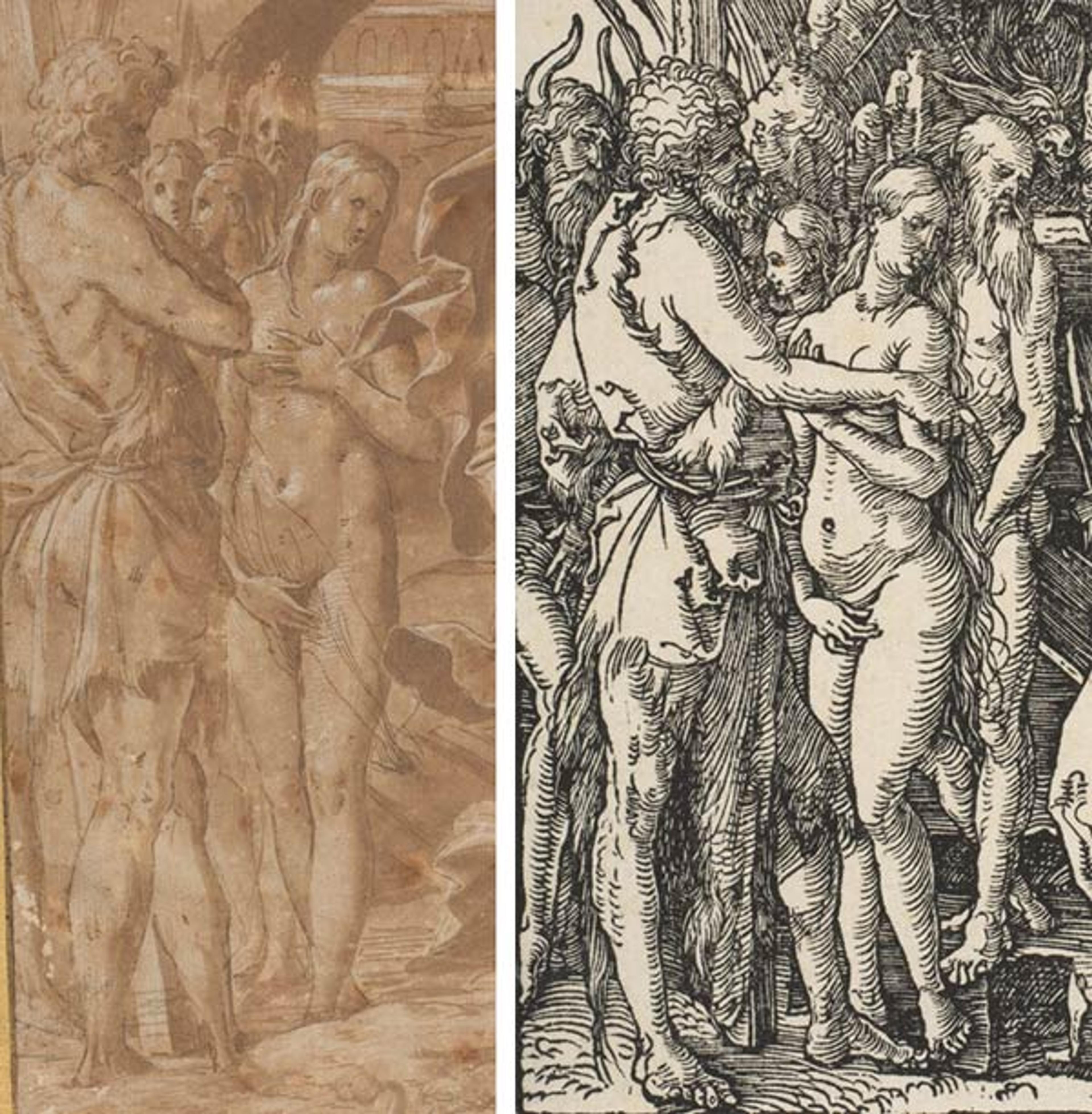
Left: Luca Penni (Italian, 1500/1504–1557). Christ in Limbo (detail of figure group on left), ca. 1547–48. Black chalk, pen and brown ink, brush and brown wash, heightened with white gouache, on paper prepared with pale brown wash. The Metropolitan Museum of Art, New York, Purchase, Brooke Russell Astor Bequest and Harry G. Sperling Fund, 2014 (2014.264). Right: Albrecht Dürer (German, 1471–1528). Christ Descending into Hell, from The Little Passion (detail of figure group on left), ca. 1509. Woodcut. The Metropolitan Museum of Art, New York, Gift of Junius S. Morgan, 1919 (19.73.195)
Penni's drawing was then etched by Léon Davent, a printmaker active in Fontainebleau and Paris. In a composition which has been reversed as a result of the printing process, we can see the minor changes Davent made to Penni's design: giving Christ a halo and portraying Eve as nude, something Penni hesitated over in the drawing.
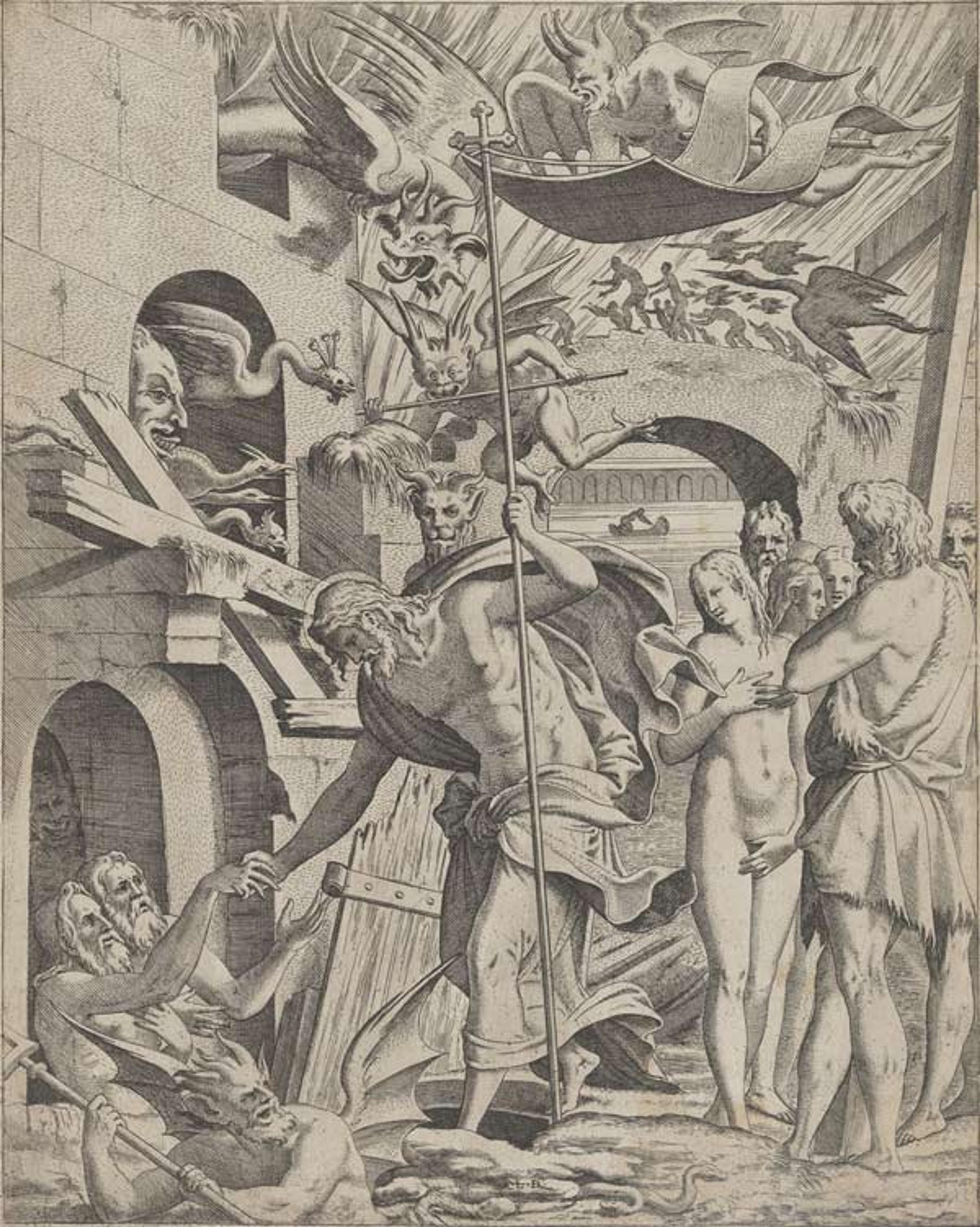
Léon Davent (French, active 1540–56), after Luca Penni (Italian, 1500/1504–1557). Christ in Limbo, ca. 1547–48. Etching. The Metropolitan Museum of Art, New York, The Elisha Whittelsey Collection, The Elisha Whittelsey Fund, 1959 (59.596.33)
In other cases, like that of master printmaker Jacques Callot (1592–1635), the same artist would both design the composition and execute the etching. In the drawing, he used blocky areas of brown wash to depict a May Day festival in a small village.
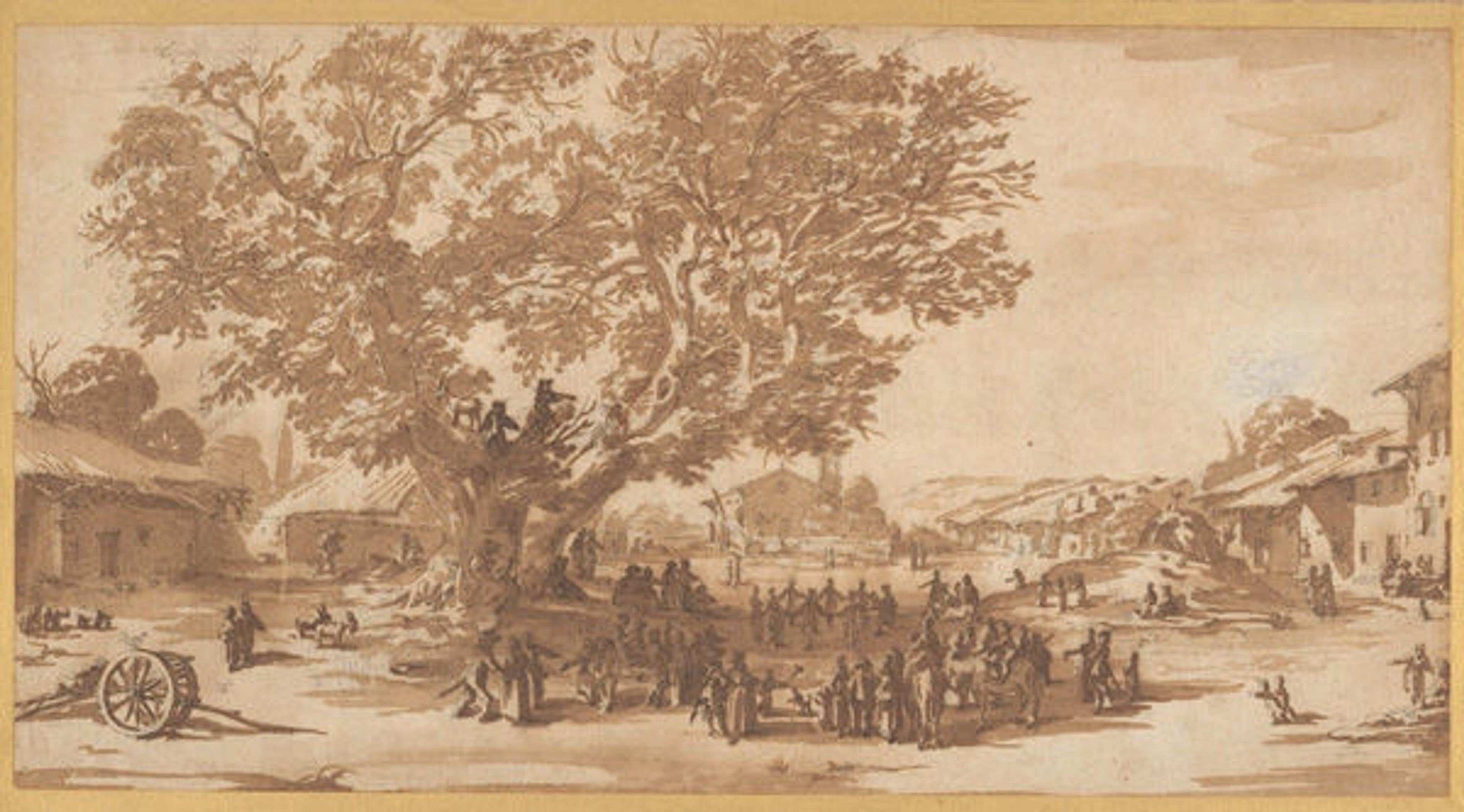
Jacques Callot (French, 1592–1635). May Day Celebrations at Xeuilley, ca. 1624–25. Pen and brown ink, brush and brown wash. The Metropolitan Museum of Art, New York, Purchase, Rogers Fund and several members of the Chairman's Council Gifts, 2008 (2008.74)
In the print, he used only the line of the etching needle to reproduce the scene, all the while adding details and additional figures.
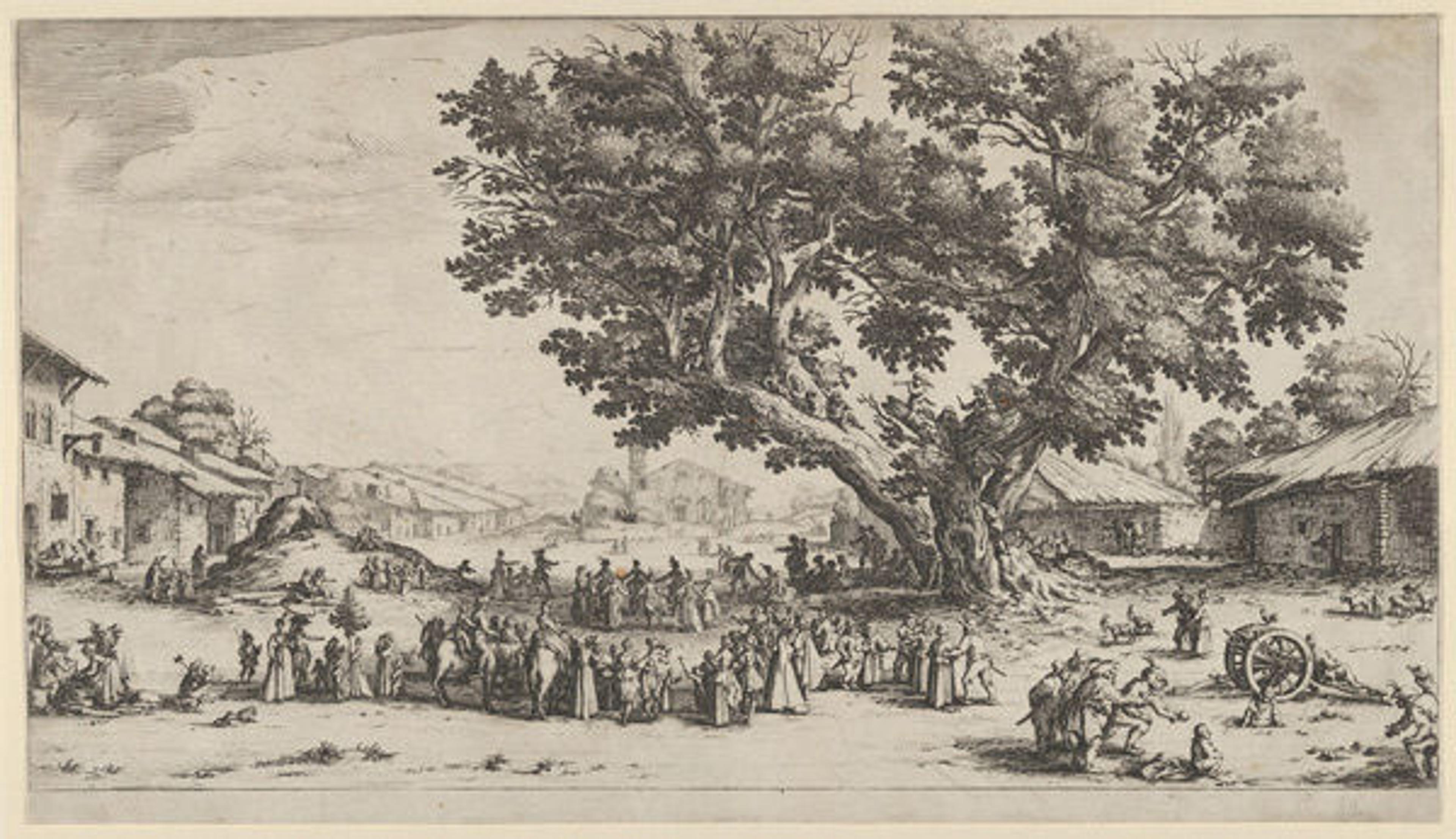
Jacques Callot (French, 1592–1635). May Day Celebrations at Xeuilley, ca. 1624–25. Etching, first state of four. The Metropolitan Museum of Art, New York, Harris Brisbane Dick Fund, 1925 (25.2.5)
The translation of a drawing into print, which allowed the production and sale of multiples, was not always contemporaneous and could be done at a later date. This highly finished nocturnal scene of the Holy Family fleeing into Egypt was part of a set of twenty-two designs relating to the life of the Virgin.
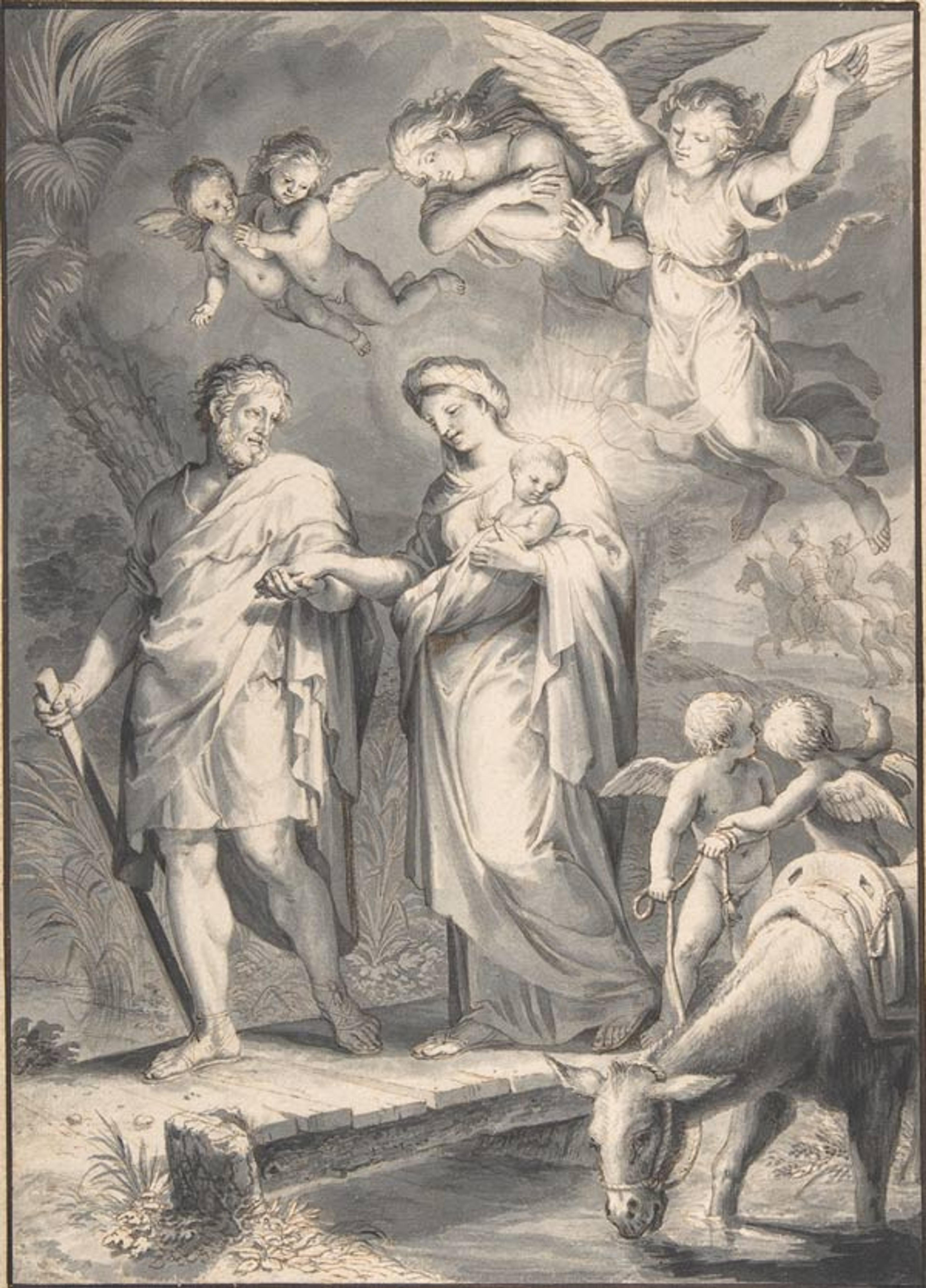
Jacques Stella (French, 1596–1657). The Flight into Egypt, 17th century. Pen and brown ink, brush and gray wash, heightened with white gouache. The Metropolitan Museum of Art, New York, Harry G. Sperling Fund, 1987 (1987.22)
The series was only engraved well after Stella's death, when the drawings had clearly made their way to Italy. In what may have been either an innocent mistake or an intentionally duplicitous marketing ploy, the series was ascribed to Stella's friend and considerably more famous compatriot, Nicolas Poussin (1594–1665).

Francesco Polanzani (Italian, 1700–after 1783), after Jacques Stella (French, 1596–1657). The Flight into Egypt, 1700–(?). Etching and engraving. The Metropolitan Museum of Art, New York, Gift of Margot Gordon, 1987 (1987.480)